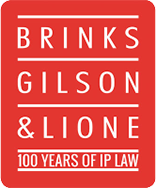On August 20, 2019, U.S. District Court Judge Joseph F. Bataillon issued a judgment addressing the total amount of damages awardable to Olaplex LLC (“Olaplex”) after a contentious legal battle with French cosmetics giant L’Oréal USA, Inc. (“L’Oréal”) over the “holy grail” of hair products: a protective additive for chemical treatments preventing hair damage caused by coloring and styling.
Olaplex, a small California startup, was founded in 2014 after CEO Dean Christal partnered with Drs. Craig Hawker and Eric Pressly to invent a novel “bonding building” intended to protect hair during and after chemical treatments. Olaplex’s key ingredient, bis-aminopropyl diglycol dimaleate, rebuilds disulfide bonds in hair fibers’ cuticle and cortex layers. Olaplex quickly faced the reality that competitors might copy its proprietary technology using less expensive ingredients and patented the technology both abroad and in the United States. Two of the patents asserted in this lawsuit were U.S. Patent Nos. 9,498,419 and 9,668,954 titled “Keratin Treatment Formulations and Methods.” Hawker and Pressly were the named inventors of the ’419 and ’954 patents and subsequently assigned them to Liqwd, Inc. (“Liqwd”), another professional haircare brand founded by Dean Christal prior to Olaplex’s inception. Olaplex exclusively licensed the ’419 and ’954 patents with “full rights of enforcement and recovery, including the right to pursue recovery of royalties and damages for infringement” according to Olaplex’s third amended complaint.
In early 2015, Olaplex’s products not only caught the attention of celebrities and professional hairstylists but also L’Oréal. Olaplex claims that L’Oréal first tried to poach Drs. Hawker and Pressly before approaching Olaplex with a potential acquisition deal. As discussions between Olaplex and L’Oréal advanced in the spring of 2015, the parties entered into a non-disclosure agreement (“NDA”) to govern their talks and protect trade secret information Olaplex would share. Pursuant to the NDA, Olaplex disclosed to L’Oréal its financial information, a copy of Olaplex’s then unpublished maleic acid patent application describing Olaplex’s technology, and detailed technical and testing information about Olaplex’s products. In September 2015, negotiations between the parties ceased when L’Oréal informed Olaplex that it no longer was interested in acquiring the company.
Subsequently, Olaplex alleged that L’Oréal introduced three products that infringed Olaplex’s proprietary technology embodied in the ’419 and ’954 patents and disclosed pursuant to the NDA during the acquisition talks with L’Oréal. Pursuant to the choice of law provision in the NDA,[1] Liqwd and Olaplex (hereinafter “Olaplex”) filed suit against L’Oréal in the District of Delaware for federal and state trade secret misappropriation, patent infringement of the ’419 and ’954 patents, and breach of contract.
Discussion
At trial, L’Oréal was hit with substantial money damages and a permanent injunction barring the sale of the accused products. The jury awarded Olaplex a total of over $91 million in damages, broken down into $22,265,000 for trade secret misappropriation, $22,265,000 for breach of contract, $21,810, 000 for infringement of the ’419 patent, and $24,960,000 for infringement of the ’954 patent.[2] The jury also found that L’Oréal’s acts were willful, opening the door for the District Court to substantially increase the damages.
Because parts of the jury award were duplicative—covering the same wrong—U.S. District Judge Joseph F. Bataillon amended the damages in an August 20, 2019 judgment (hereinafter “Judgment”). In essence, once the trade secrets were made public when the ’419 patent application was published February 5, 2016, the Court ruled that the “secret” was out: The use of maleic acid to protect color-treated hair could no longer be claimed as a trade secret, thus cutting off all potential recovery for use of that secret from that point forward.
Specifically, the Court found that a reduced damages award from $22 million to $9.5 million was necessary because other than the active ingredient, maleic acid, which was disclosed in the ’419 patent, Olaplex did not provide evidence of the value of the information L’Oréal received pursuant to the NDA in May 2015. Rather, the Court found that Olaplex only provided proof that L’Oréal had a 20- to 32-month advantage as a result of being privy to the fact that maleic acid was the active ingredient in Olaplex’s products. The Court resolved this issue by dividing the jury’s $22 million award by the number of days in twenty months to determine daily damages and multiplying that amount by the number of days between the date the trade secret was disclosed—May 19, 2015—and the date the trade secret was published in the ’419 patent application—February 5, 2016. Ultimately, the Court adjusted the jury’s total damages award from $91 million to about $50 million, as summarized in the chart below.
Table: Adjustment of Damages in the August 20, 2019 Judgment
|
Date |
Event |
Jury Award |
Final Order |
|||
|
May 19, 2014 |
Unpublished patent applications shared with L'Oréal |
Trade Secret |
Contract claim |
|
Trade secret and breach of damages |
Patent Claims |
|
Feb. 5, 2016 |
Trade secret was published |
Patent Claims |
||||
|
|
Willfulness |
TBD |
N/A |
TBD |
($19M) |
|
L’Oréal already has filed a notice of appeal with the Federal Circuit regarding the permanent injunction placed against it. Since the early stages of the case, the parties debated whether a preliminary injunction would be appropriate. Olaplex successfully obtained a preliminary injunction against L’Oréal in April 2019, just a few months before trial. [3] This preliminary injunction remained in place through the trial, but just four days after the jury’s verdict, the Court granted a permanent injunction. The permanent injunction barred L’Oréal from making and selling more than nine of its popular haircare products that allegedly use Olaplex’s patented maleic acid and hair care method. [4] Interestingly, the injunction remains in place “until further order of the Court” and is not set to sunset when the patents at issue expire or become unenforceable.[5]
L’Oréal immediately fought the injunction by requesting the Federal Circuit to issue an emergency stay while seeking an appeal. The Federal Circuit granted the motion for interim relief in part, staying the permanent injunction until L’Oréal’s motion to stay pending appeal is decided, but leaving the door open for Olaplex to submit a sur-reply.[6] It remains to be seen how this additional briefing will affect the Court’s decision.
Practical Tips
Innovators often develop technology whose commercialization is uncertain. During early stage product development, an invention can be protected by maintaining the insight as a trade secret. Trade secrets can last indefinitely, as long as they remain confidential. Innovation owners should take critical steps to preserve the confidential nature of proprietary information with internal safeguards and non-disclosure agreements, particularly when that information must be shared with a third party for various business transactions. It appears that Olaplex did that leading up to and during acquisition discussions with L’Oréal, and those critical actions led to a substantial trade secret and breach of contract damage award. That award was curtailed by the Court; however, so it is important to ascertain the value, and have proof of such value, of proprietary information that is disclosed to a third party so that in the event such information is misappropriated and/or a contract is breached and litigation ensues, innovators are awarded the highest possible damages.
Many product developments, however, cannot be preserved as confidential once the product is sold. For example, chemical products can be characterized and their proportions measured so that a competitor can reverse engineer the product. Trade secrets do not prevent reverse engineering, but patents do. Accordingly, IP assets can evolve depending on the nature of the product or service offering and changing business circumstances. In this case, Olaplex took steps to improve its product offerings and licensed patent rights for that improvement that L’Oréal apparently copied.
The combination of trade secret and patent protection coupled with effective contract terms undergirded a successful trial for Olaplex, and substantial damages. Prudent IP managers can learn from the Olaplex v. L’Oréal case both to avoid liability as well as to build an effective intellectual property portfolio.
[1] Paragraph 12 of the NDA provided that the parties “irrevocably consent to the exclusive jurisdiction of any state or federal court located within the State of Delaware over any dispute arising out of or relating to this Agreement and the transactions contemplated hereby.”
[2] August 20, 2019 Judgment, Dkt. 1078 at 1-2.
[3] Permanent Injunction, Dkt. 1073 at 2.
[4] The products include: the Matrix Bond Ultim8 Step 1 Amplifier, the Matrix Bond Ultim8 Step 2 Sealer, the Matrix Bond Ultim8 Step 3 Sealing Treatment, the Redken pH–Bonder #1 Bond Protecting Additive, the Redken pH-Bonder #2 Fiber Restorative Pre-Wash Concentrate, the Redken pH-Bonder #3 Post-Service Perfector, the L’Oréal Professionnel Smartbond Step 1 Additive, the L’Oréal Professionnel Smartbond Step 2 Pre Shampoo, and the L’Oréal Professionnel Smartbond Step 3 Conditioners.
[5] Id.
[6] U.S. Court of Appeals for the Federal Circuit Order, Dkt. 1079 at 1-2.





 />i
/>i
